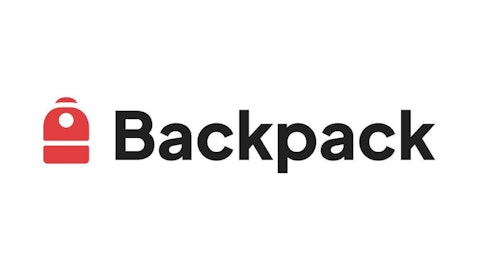This article takes a look at the 13 biggest 401(k) mistakes to avoid. If you wish to skip our detailed analysis on unraveling the controversy surrounding 401(k) plans, you may go to 5 Biggest 401(k) Mistakes to Avoid.
Unraveling the Controversy Surrounding 401(k) Plans
Who is Robert Kiyosaki? More importantly, why does Robert Kiyosaki not like 401k? Robert Toru Kiyosaki, a Japanese-American businessman and author, is famous for the Rich Dad Poor Dad series of personal finance books. According to him, 401(k)s are a “horrible retirement plan”. Yet, according to the Bureau of Labor Statistics, 56% of all civilian workers, including both full-time and part-time employees, participated in a workplace retirement plan in 2023. A retirement savings plan is an employer-sponsored plan where plan participants have individual accounts, including 401(k), 403(b), 457, and SIMPLE savings plans. Given these statistics, if retirement plans such as a 401(k) are bad, why are people participating?
According to the financial expert Kiyosaki, there are many mistakes that folks tend to make with a 401(k) account, as well as drawbacks in the plan itself. For instance, there is high management fees associated with 401(k) plans, which usually tend to eat away at the retirement savings of an individual. Moreover, individuals also tend to have lesser control over the money invested in a 401(k), there is a limit to what can be invested, and one can’t even gain immediate access without paying a fee. There isn’t any insurance on these plans, either. Rich Dad staff also notes that 401(k) plans are taxed at higher earned income rates, and provide a false security of employer match. Without a 401(k), your employer should still provide a match equivalent. However, they are only obliged to pay the match if you opt-in. Additionally, vesting schedules may allow the employer to avoid paying the match if the employee leaves before becoming vested.
Providing all these arguments, the Rich Dad Poor Dad staff stands their ground that 401(k) plans are simply horrible. Contrarily, T. Rowe Price Group, Inc. (NASDAQ:TROW) seems to think that 401(k) plans still make sense. According to T. Rowe Price Group, Inc. (NASDAQ:TROW), 401(k) plans are an important way to save and prepare for retirement. There are many advantages of 401(k) plans. For starters, employers have increasingly been adopting auto-enrollment of such plans which in turn allow for automatic savings for individuals. A T. Rowe Price Group, Inc. (NASDAQ:TROW) study in 2022 showed that 86% of employees participated in their plan if it was set up for auto-enrollment. Moreover, these plans also help individuals plan for retirement and aid in meeting retirement goals through tax-deferred growth with traditional or Roth savings.
While the arguments towards and against a 401(k) plan are many, The Charles Schwab Corporation (NYSE:SCHW) agrees that 401(k) plans can be quite complex. Even though they are the most common retirement plans out there, they are not that easy to understand. Consequently, it’s easy to make mistakes when operating one, which only demonstrates a lack of preparedness. Not being prepared or aware of the intricacies revolving around retirement planning is one of the most critical mistakes in retirement planning.
As such, navigating the world of 401(k) plans can be a daunting task for many individuals seeking financial security and freedom. While these retirement savings accounts are an excellent opportunity for wealth accumulation, they have their fair share of pitfalls. Making mistakes in managing your 401(k) can have significant consequences on your retirement nest egg. In this exploration, we’ll delve into some of the biggest 401(k) mistakes that individuals commonly make, and why they should be avoided.

A financial advisor discussing retirement plans with an elderly couple in their home.
Methodology
To compile the list of 13 biggest 401(k) mistakes to avoid, we have used several sources such as Bank Rate, CNBC, Kiplinger, Investopedia, Forbes, and U.S. News, to name a few. Next, we adopted a consensus methodology to select the mistakes, which we have listed down below.
By the way, Insider Monkey is an investing website that tracks the movements of corporate insiders and hedge funds. By using a similar consensus approach, we identify the best stock picks of more than 900 hedge funds investing in US stocks. The top 10 consensus stock picks of hedge funds outperformed the S&P 500 Index by more than 140 percentage points over the last 10 years (see the details here). Whether you are a beginner investor or a professional one looking for the best stocks to buy, you can benefit from the wisdom of hedge funds and corporate insiders.
Here are the 13 biggest 401(k) mistakes to avoid:
13. Inadequate Default Savings Rate
One of the biggest 401(k) mistakes that you can make is settling for a low default savings rate. 401(k) contribution rates, also known as deferral rates, act as an important lever of your retirement savings. Having higher deferral rates increases your chances of having a larger nest egg in retirement. According to Vanguard, the average deferral rate was 7.4% in 2022. Even though increasing your default saving rate increases your chances of improving your retirement nest egg, having a deferral rate that is too high can also prove to be dangerous. According to a study by the National Bureau of Economic Research, higher defaults aren’t always better, and overly aggressive rates can cause financial strain on employees, and lead to potential opt-outs, amongst other problems.
12. Forfeiting Valuable 401(k) Matching Contributions
If you miss out on the 401(k) match, it potentially means that you’re leaving free money on the table. This is one of the biggest 401(k) mistakes that one can make. The SECURE 2.0 Act of 2022 primarily enhances automatic enrollment options for 401(k) plan sponsors. If an individual is automatically enrolled in a plan, it’s advisable to maximize the benefits available to them. They must ensure that they determine the highest employer match that they are entitled to and understand the required contribution amount to qualify for these benefits in their 401(k). For instance, an employer might provide a 50 percent match on your contributions up to 6 percent, indicating that you can receive up to 3 percent of your salary as an employer match. The matching contribution is contingent on a vesting period that could extend over a few years. If you fail to contribute enough to contribute to the company’s match, you’re leaving your chance to compound your money faster.
11. Under-utilizing Tax Break Opportunities
“Anything you can do to tax-defer helps stretch your dollar”.
-Shannon Edwards, UFHR Benefits Director.
One of the main advantages of a 401(k) plan is that individuals don’t have to pay taxes on the amount contributed. These contributions are subtracted from your paycheck and are not part of taxable income. Consequently, the amount of tax that gets taken out of your paycheck is reduced. The more that an individual contributes to their 401(k) plan, the less taxes they have to pay. According to the Internal Revenue Service (IRS), the amount that individuals can contribute to their 401(k) plans in 2024 has increased to $23,000, up from $22,500 for 2023. The limit on additional catch-up contributions for employees 50 or older is $7,500, the same as in 2023.
10. Overpaying in 401(k) Fees
Another 401(k) mistake that can significantly impact the overall returns of your 401(k) investments is failing to look at, and consequently overpaying in 401(k) fees. While it is true that many plans negotiate lower costs on behalf of the employees. However, there are plenty of others that charge hefty fees instead. Since different 401(k) plan investments come with different fees, it is best to compare the fees of different plan investments before choosing one.
9. Early Withdrawal Penalties
According to the IRS, any amount that an individual withdraws from an IRA or a retirement plan before reaching the age of 59 ½ is called “early” or “premature” distributions. For such early or premature distributions, there is a 10% early withdrawal tax. There are certain exceptions to this 10% withdrawal penalty, which can be checked out in detail on the IRS website. Even if there is no penalty on your withdrawal, you will still reduce your retirement savings and even miss out on any investment gains that the money would have earned you.
8. Initiating Risky 401(k) Loans
When you take out a 401(k) loan, you are taking a loan from your retirement account. According to The Charles Schwab Corporation (NYSE:SCHW), if you’re disciplined, responsible, and can manage to pay back a loan, go ahead. However, there are potential drawbacks related to initiating these loans. First, you’re removing money from your retirement account that would otherwise grow tax-free. According to Investopedia, since money taken from a 401(k) loan is typically tax-exempt, it is better than taking a hardship withdrawal. However, the best course of action is to not initiate a 401(k) loan at all.
7. Neglecting Old 401(k) Plans
Another critical mistake that potential retirees are making is at the time they are switching jobs. This mistake involves ignoring or forgetting about your previous 401(k) plans. Failing to roll over your old 401(k) is a big mistake, resulting in lost opportunities for portfolio management and growth. Therefore, the best course of action is to roll it into your new employer’s 401(k) plan. In the case you leave your old plan with a previous employer, you may have to risk a forced cash-out, for example, which leads to tax implications and penalties. According to The Charles Schwab Corporation (NYSE:SCHW), individuals should compare the pros and cons of all available options, including fees and expenses, investment and distribution options, legal and creditor protections, loan provisions (if any), and tax treatment.
6. Rolling 401(k) Plan into an Existing IRA
Next up on our list of biggest 401(k) mistakes is rolling your 401(k) plan into an existing IRA. In the case that an individual switches jobs, they have the option to move their old 401(k) plan to a new qualified retirement plan. This helps them avoid early distributions and even helps them to allow their money to grow tax-sheltered. Many individuals aren’t aware that commercial creditors typically can’t touch your 401(k), while they can do so with an IRA. According to the Bankruptcy Abuse Prevention and Consumer Protection Act, the assets in your 401(k) plan are safeguarded from creditors.
However, it’s important to note that under federal bankruptcy law, only the initial $1,512,350 of assets in an Individual Retirement Account (IRA) is exempt from creditors’ claims. This means that amounts beyond this threshold may be subject to creditor claims in the event of bankruptcy. This exemption limit doesn’t affect funds in an IRA rolled over from a 401(k), provided they are kept separate from any initial IRA contributions. To safeguard unlimited creditor protection, it’s advisable to perform a 401(k) rollover into a distinct IRA if you have an old 401(k) plan.
Click to continue reading and see the 5 Biggest 401(k) Mistakes to Avoid.
Suggested Articles:
- 20 Countries That Read the Most in the World
- 50 Best Countries in the World
- 18 Most Tax-Friendly States to Retire in 2024
Disclosure: none. 13 Biggest 401(k) Mistakes to Avoid is originally published on Insider Monkey.





